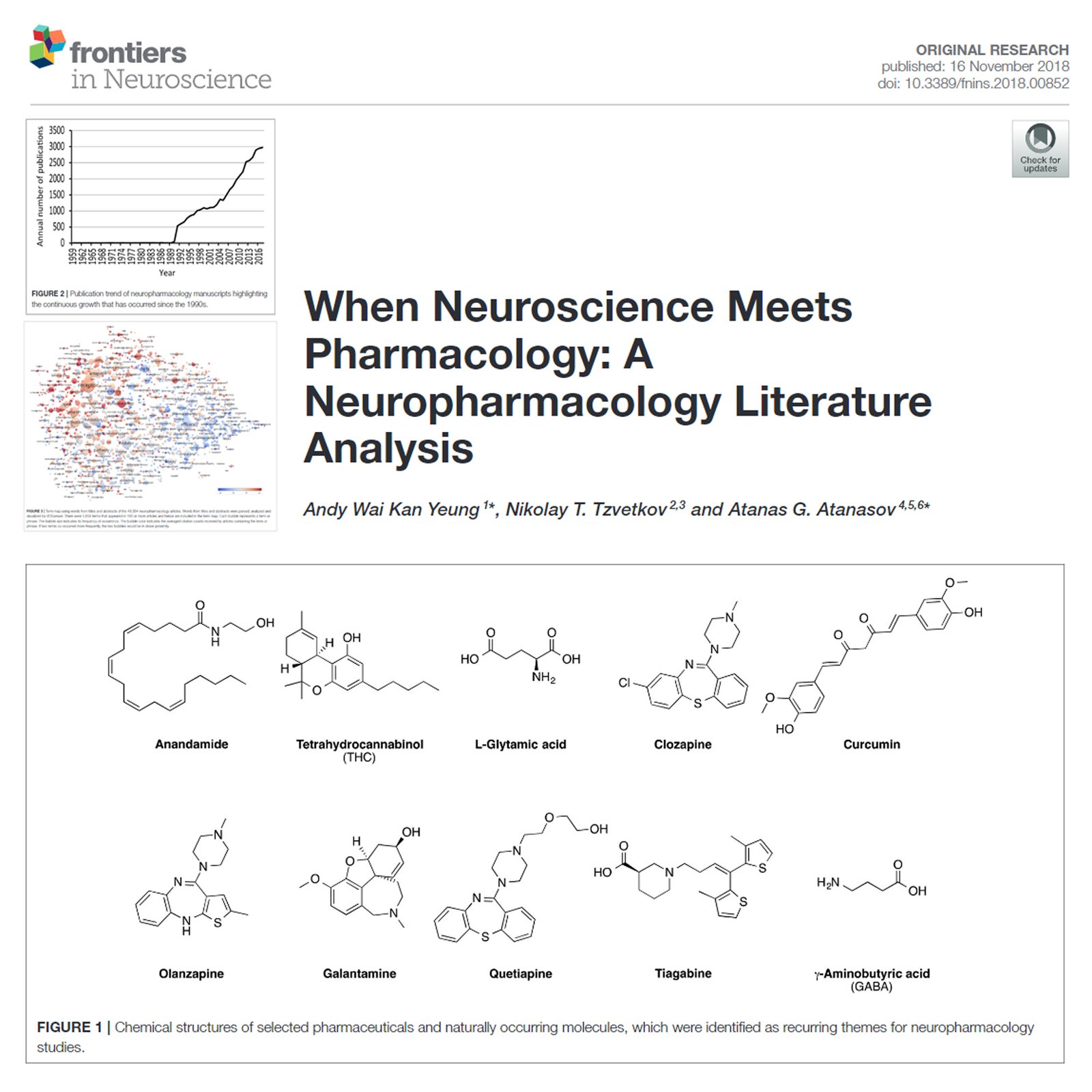Abstract:
Background: Considering the enormous progress in the field of neuropharmacology and its global importance, as well as the lack of bibliometric studies examining this field as a whole, it is a high time to assess the prevailing topics and citation performances of its research works.
Methods: Web of Science (WoS) was searched to identify relevant neuropharmacology articles, which were analyzed with reference to (1) publication year, (2) journal title, (3) total citation count, (4) authorship, (5) WoS category, and (6) manuscript type. The identified manuscripts were analyzed with VOSviewer for further bibliometric parameters, such as citation analysis of institutions, countries/regions, and journals, and to visualize the citation patterns of the terms appearing in the titles and abstracts.
Results: The literature search resulted in 43,354 manuscripts. Nearly 98% of them were published since the 1990s. The majority of the manuscripts were original articles (n = 31,360) and reviews (n = 11,266). The top five WoS categories associated with the analyzed manuscripts were Pharmacology/Pharmacy (n = 14,892, 34.3%), Neurosciences (n = 11,747, 27.1%), Clinical Neurology (n = 4,981, 11.5%), Psychiatry (n = 4,464, 10.3%), and Biochemistry/Molecular Biology (n = 4,337, 10.0%). Seven of the top ten most prolific institutions were located in the USA, and one each in Canada, Italy, and the UK, respectively. Manuscripts mentioning certain molecules or pharmaceuticals had high citations per manuscript, such as those reporting about anandamide, tetrahydrocannabinol (THC), L-glutamate, clozapine, and curcumin. These terms with at least 50 citations per manuscript were mostly related to cannabis and anti-psychotic drugs, with some dealing with anti-epilepsy effects and Alzheimer’s disease.
Conclusion: We have identified and analyzed all neuropharmacology articles published since the 1990s. Importantly, the area of neuropharmacology research has been growing steadily due to the global trend in population aging and associated with this continuously increasing number of patients with neuropsychiatric disorders worldwide. It is hoped that identification of new pharmaceutically useful molecules or new clinical applications will continue in the future, in order to improve clinical outcomes and to further strengthen the field of neuropharmacology, a research area cross-linking basic and clinical sciences.
Reference:
Yeung AWK, Tzvetkov NT, Atanasov AG. When Neuroscience Meets Pharmacology: A Neuropharmacology Literature Analysis. Front Neurosci. 2018 Nov 16;12:852. doi: 10.3389/fnins.2018.00852. eCollection 2018. PubMed PMID: 30505266; PubMed Central PMCID: PMC6250846.

Keywords: neuroscience, pharmacology, neuropharmacology, literature analysis, neuropsychiatric disorders, anti-epilepsy effects, Alzheimer’s disease, cannabis, anandamide, tetrahydrocannabinol (THC), L-glutamate, clozapine, curcumin, molecules, pharmaceuticals, bibliometric parameters, Web of Science, citation performance.
Join for free INPST as a member
The International Natural Product Sciences Taskforce (INPST) maintains up-to-date lists with conferences, grants and funding opportunities, jobs and open positions, and journal special issues with relevance for the area of phytochemistry and food chemistry, pharmacology, pharmacognosy research, and natural product science.

























